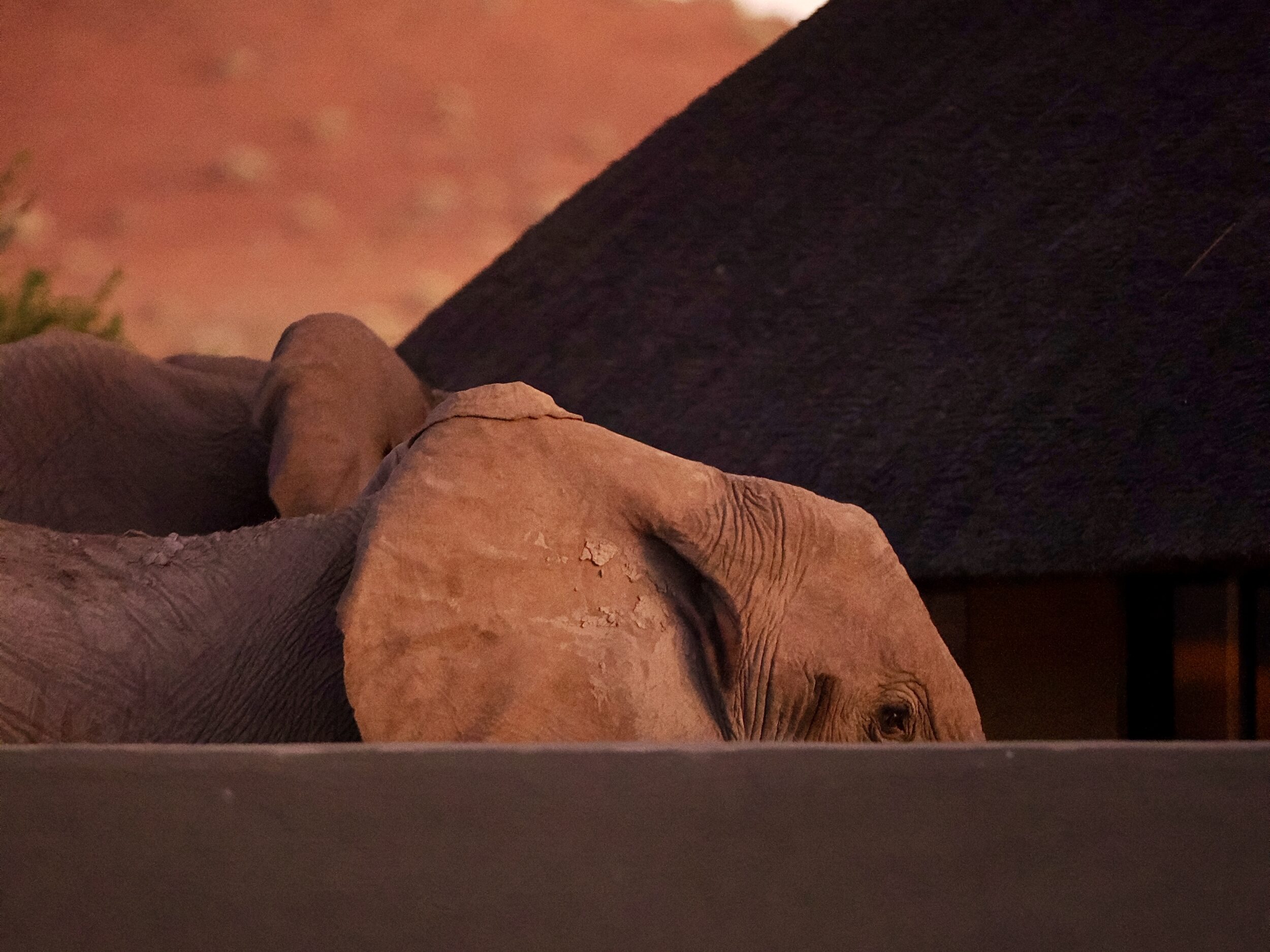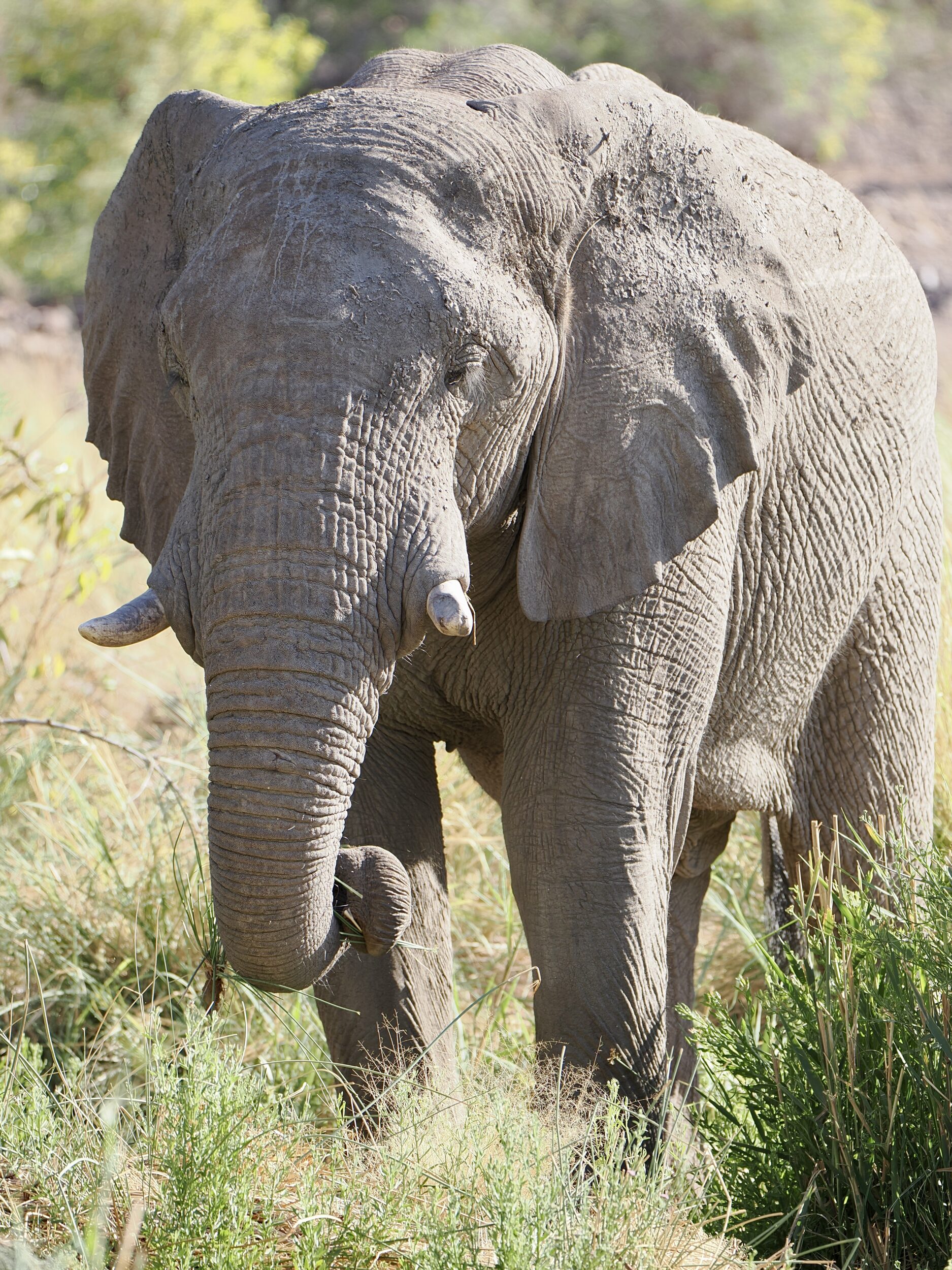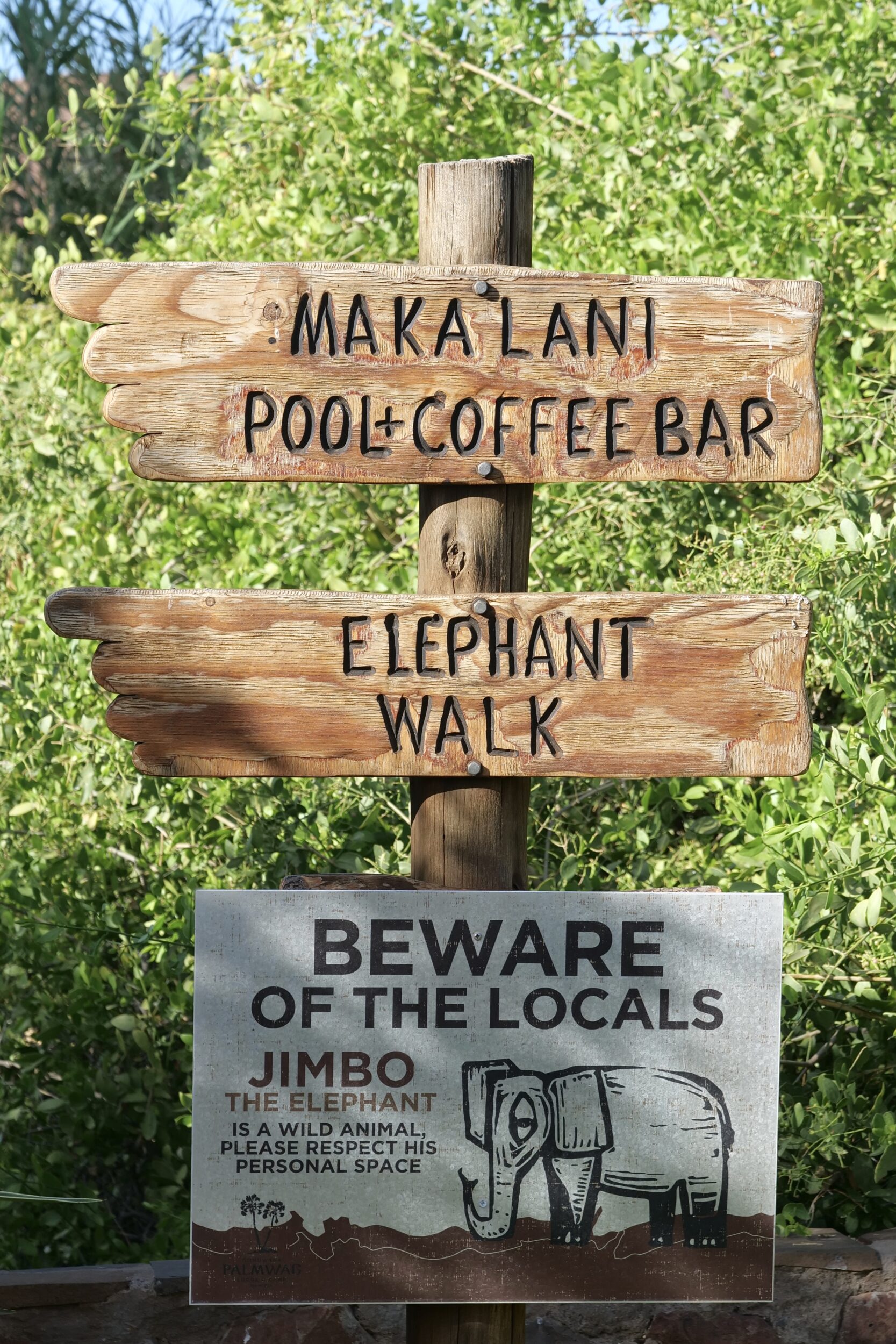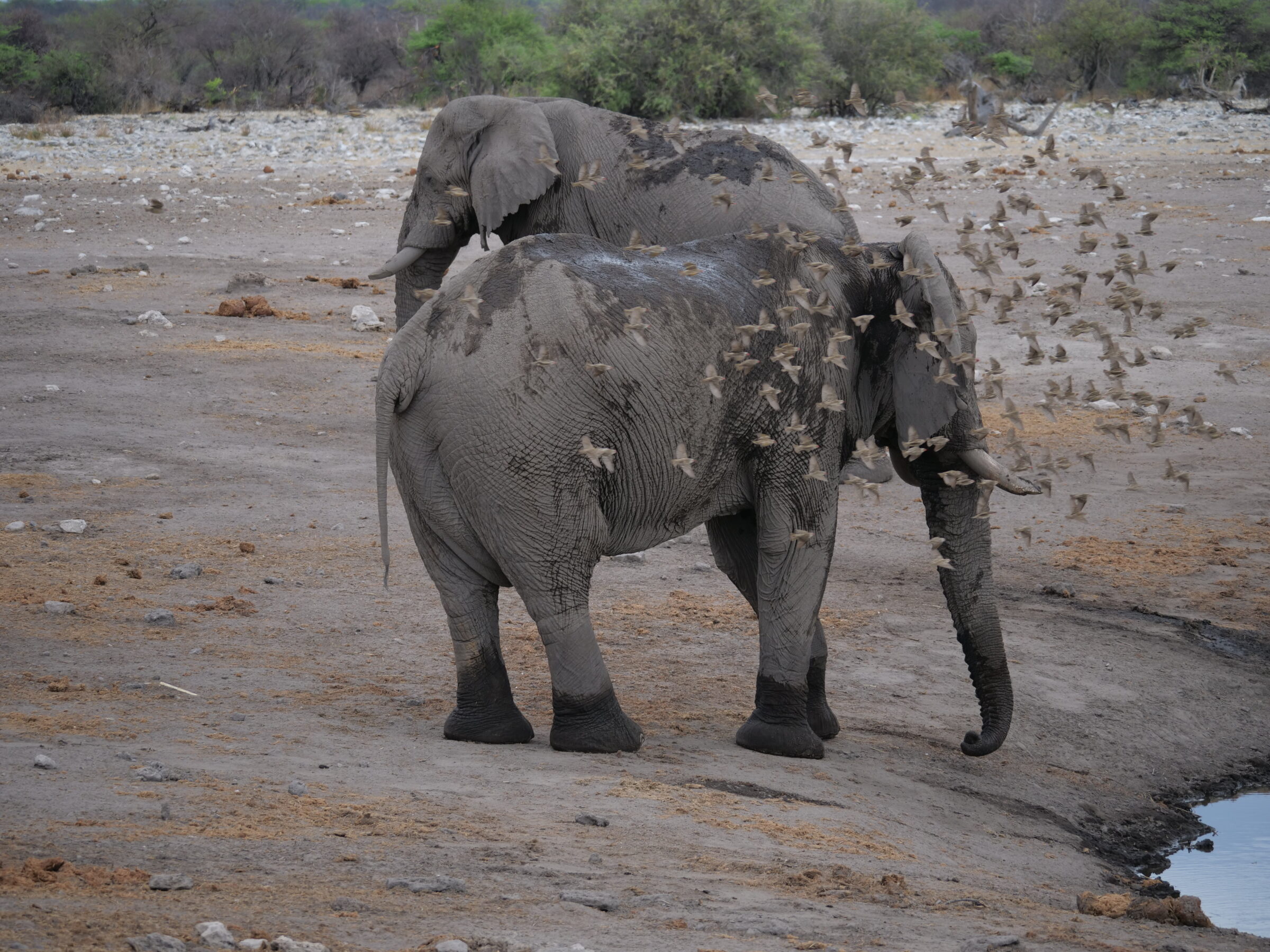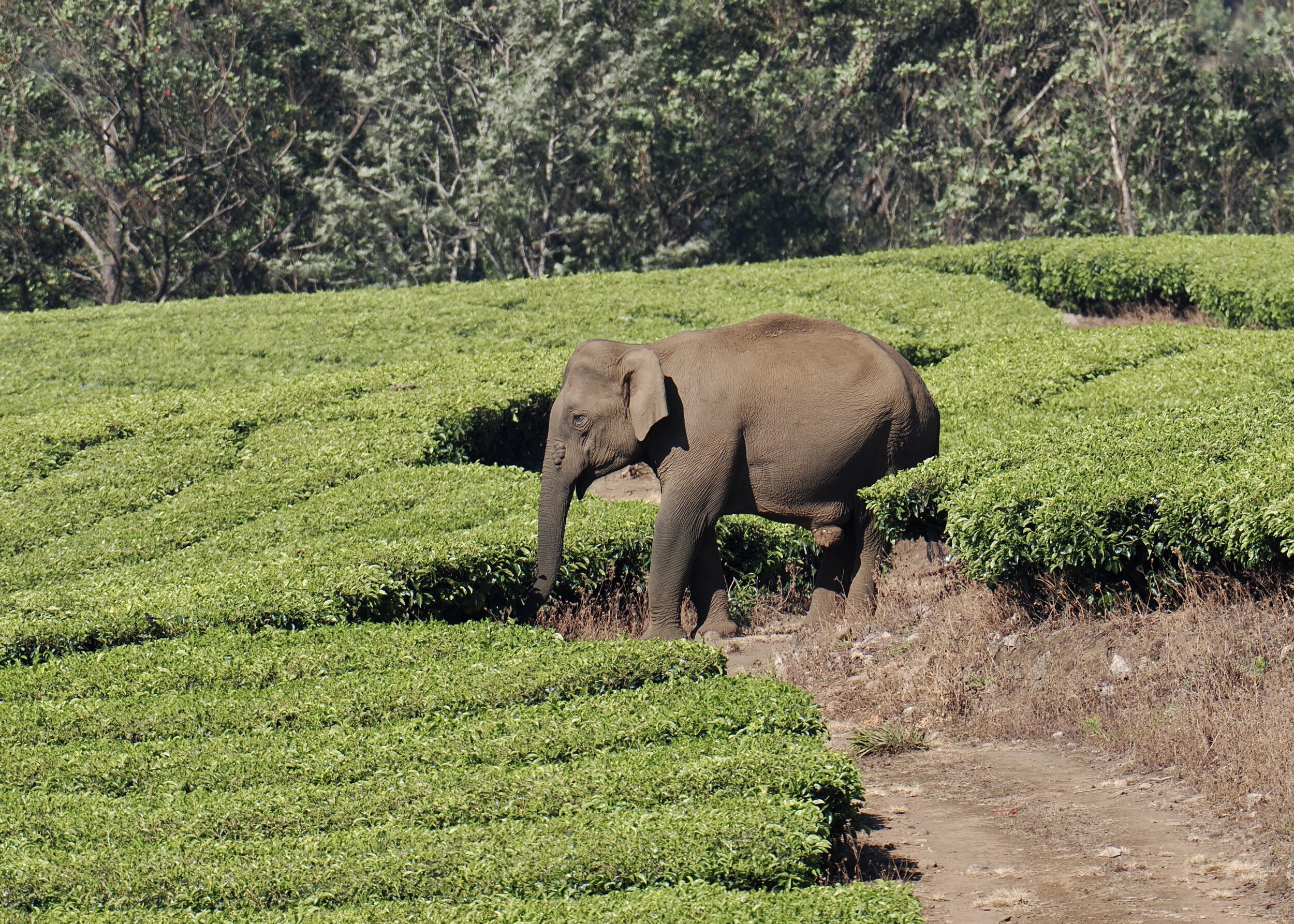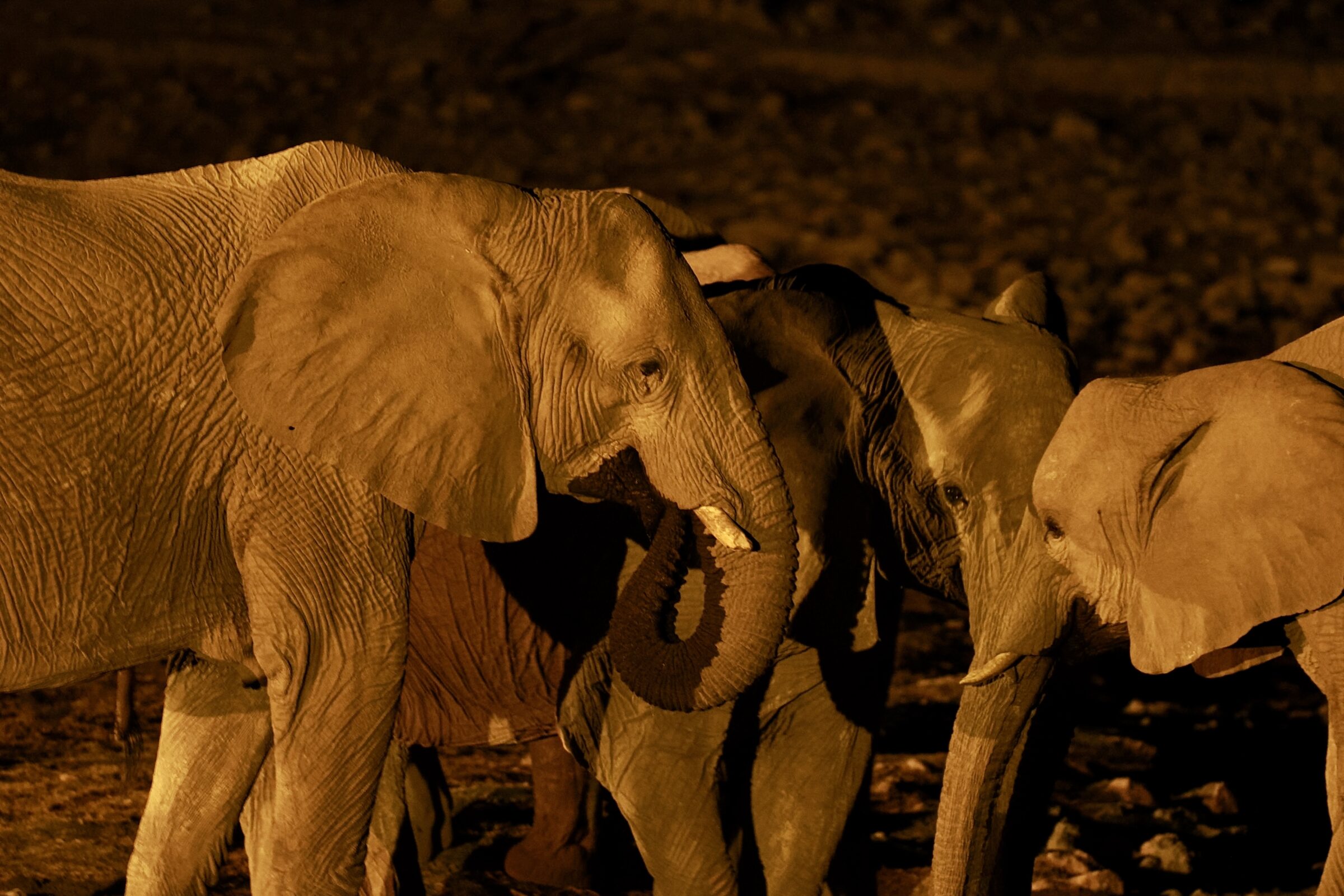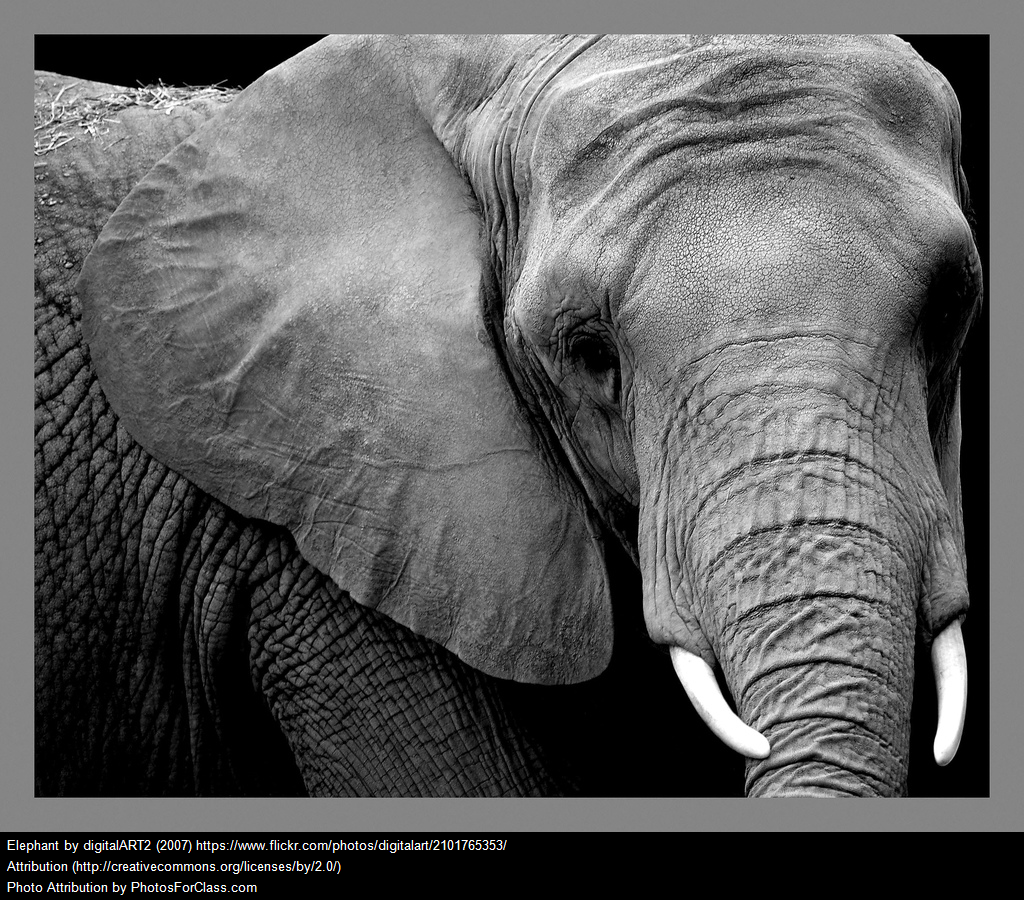Jimbo – this chapter’s star individual – is an adult, desert-adapted elephant.
As is generally true of adult bull elephants, his is a mostly-solitary existence.
Only two nations are now home to desert-adapted elephants: Mali and Namibia.
Namibia’s live in that nation’s northwestern corner (some of them do set foot in the southwest corner of Angola) – an area long known as “Damaraland”, although the currently-preferred name is “the Kunene Region”.
Contrary to popular misconception, they do not comprise a separate species; desert elephants and African bush elephants (aka “African savanna elephants”) are fellow members of Loxodonta Africana, the current world’s largest terrestrial mammal species.
The desert-dwellers are very different/distinctive, but what sets them well apart from savanna/bush elephants is largely a matter of behaviour/culture rather than genetics.
